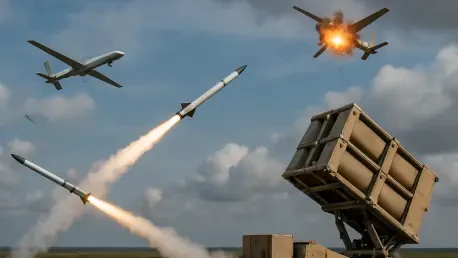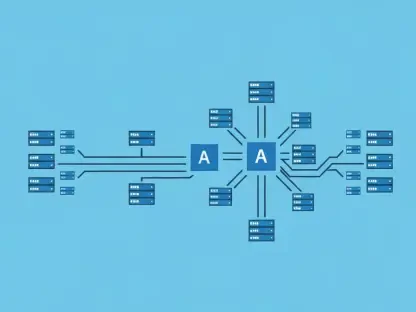I’m thrilled to introduce Vijay Raina, a renowned expert in military technology and defense systems, with a deep focus on innovative air defense solutions and drone technology. Today, we’re diving into a fascinating conversation about MaXon Systems, a young Ukrainian company making waves with their groundbreaking air-to-air defense system designed to counter long-range Shahed-type drones. Vijay offers unparalleled insight into the development, technology, and strategic importance of this system, which is already undergoing combat testing in the Kyiv and Chernihiv regions. Our discussion explores the origins of the company, the unique design of their interceptor drones, the collaborative efforts behind the project, and the real-world implications of this cutting-edge technology.
How did MaXon Systems come into being, and what sparked the idea for this innovative air defense system?
MaXon Systems is a very young company, founded just earlier this year, which makes their rapid progress all the more impressive. The inspiration for their air defense system came from a Danish competition focused on finding effective ways to counter Shahed-type drones and their variants. This challenge really lit a fire under the team to develop a solution that could address this specific threat. From there, they hit the ground running, turning a concept into a combat-ready system in a remarkably short time.
Can you walk us through the concept behind using interceptor drones to tackle Shahed-type drones?
The core idea is pretty ingenious—using fast, agile interceptor drones to directly engage and neutralize long-range enemy drones like the Shaheds. These aren’t your typical drones; they’re designed specifically for air-to-air combat, carried aloft by aerostats to maintain a high vantage point. This approach allows for rapid response and precise targeting, which is critical when dealing with threats that can cover significant distances and cause substantial damage if not intercepted early.
What stands out to you about the development timeline of this system, from idea to combat testing in just a few months?
Honestly, the speed of development is staggering. To go from a concept to combat trials in July, just a few months after the company’s founding, speaks volumes about the team’s focus and the urgency of the threat they’re addressing. It’s a testament to streamlined engineering processes, strong collaborations, and a clear vision. Typically, defense projects take years, so seeing this kind of progress in months is almost unheard of and highlights the innovative mindset at MaXon Systems.
How have partnerships with other organizations influenced the project’s direction and success?
Collaboration has been a cornerstone of this project. Working with the Central Scientific Research Institute of the Armed Forces of Ukraine provided critical technical and tactical input, ensuring the system meets real battlefield needs. Military intelligence also played a role in shaping the design and testing phases, offering insights into enemy drone behaviors. Additionally, partnering with Ukrainian companies like Aerobavovna for the aerostats and Oko Kamera for thermal imaging cameras ensured that the system integrates high-quality, locally sourced components, which adds to its reliability and adaptability.
What makes the design of MaXon’s interceptor drone different from other drones in the field?
The interceptor drone is a standout because it’s purpose-built for air-to-air engagement, which isn’t common in drone tech. It reaches speeds up to 300 km/h, allowing it to chase down fast-moving targets like Shaheds. Plus, about 90 percent of its components are Ukrainian-made, which not only supports local industry but also reduces dependency on foreign supply chains. They’re even working on a new propulsion system to make it even more effective, showing a commitment to continuous improvement.
Can you explain how the detection system works to identify threats like Shahed-type drones?
The detection system relies heavily on thermal imaging cameras, which are adept at spotting targets based on heat signatures, even at long ranges of 12 to 16 kilometers. This range is crucial because it gives the system time to react before the enemy drone gets too close to its target. In combat conditions, this detection capability has proven reliable during initial testing, allowing operators to track and prepare for incoming threats with a good degree of confidence.
Once a target is detected, how does the interceptor drone engage with the enemy drone?
After detection, the interceptor drone is launched from its aerostat platform to pursue the target. Given its high speed, it can close the distance quickly. The engagement process involves physically intercepting the enemy drone, either by direct collision or other disruption methods, effectively neutralizing the threat mid-air. This direct approach minimizes collateral damage compared to traditional missile-based defenses and keeps costs down, with each intercept costing around $3,500 to $4,000.
With combat testing already underway, what insights can you share about the system’s performance so far?
Combat testing in the Kyiv and Chernihiv regions has been promising, especially in terms of detection range and initial intercepts. The system has demonstrated it can identify Shahed-type targets at the reported 12 to 16 kilometers, which is a significant advantage in real-world scenarios. If all planned capabilities hold up under these conditions, the company estimates that just 20 to 25 systems could protect a city like Kyiv from such threats, which is an incredible force multiplier for urban defense.
What is your forecast for the future of air defense systems like this one, especially in countering drone threats?
I believe we’re just at the beginning of a major shift in air defense, where systems like MaXon’s will become central to countering drone threats. As drones become more prevalent in warfare, especially low-cost, long-range ones like Shaheds, the need for affordable, precise, and scalable solutions will only grow. I foresee rapid advancements in interceptor technology, better integration with AI for autonomous targeting, and wider adoption of such systems globally. The focus will likely shift toward layered defenses, combining interceptors with other tech to create impenetrable shields around critical areas.









